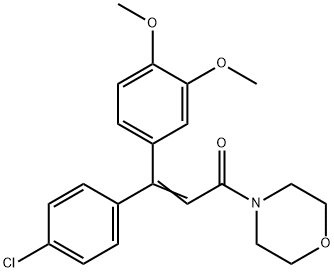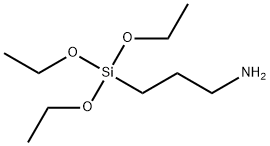N-(3-Aminopropyl)morpholine
Synonym(s):4-(3-Aminopropyl)morpholine
- CAS NO.:123-00-2
- Empirical Formula: C7H16N2O
- Molecular Weight: 144.21
- MDL number: MFCD00006184
- EINECS: 204-590-2
- SAFETY DATA SHEET (SDS)
- Update Date: 2025-01-27 09:38:02

What is N-(3-Aminopropyl)morpholine?
Chemical properties
Clear liquid
The Uses of N-(3-Aminopropyl)morpholine
Fiber synthesis; chemical intermediate.
The Uses of N-(3-Aminopropyl)morpholine
3-(4-Morpholinyl)propylamine is catalytic agent, petrochemical additive. It is an important raw material and intermediate used in organic synthesis, pharmaceuticals, agrochemicals and dyestuffs.
Definition
ChEBI: A member of the class of morpholines that is morpholine substituted by a 3-aminopropyl group a the N atom.
General Description
A colorless liquid with a faint, fishlike odor. Burns, but requires some effort to ignite. Corrosive to tissue. Produces toxic oxides of nitrogen during combustion.
Air & Water Reactions
Soluble in water.
Reactivity Profile
N-(3-Aminopropyl)morpholine behaves as an amine. Amines are chemical bases. They neutralize acids to form salts plus water. These acid-base reactions are exothermic. The amount of heat that is evolved per mole of amine in a neutralization is largely independent of the strength of the amine as a base. Amines may be incompatible with isocyanates, halogenated organics, peroxides, phenols (acidic), epoxides, anhydrides, and acid halides. Flammable gaseous hydrogen is generated by amines in combination with strong reducing agents, such as hydrides.
Hazard
Strongly irritant to tissue.
Health Hazard
TOXIC; inhalation, ingestion or skin contact with material may cause severe injury or death. Contact with molten substance may cause severe burns to skin and eyes. Avoid any skin contact. Effects of contact or inhalation may be delayed. Fire may produce irritating, corrosive and/or toxic gases. Runoff from fire control or dilution water may be corrosive and/or toxic and cause pollution.
Fire Hazard
Non-combustible, substance itself does not burn but may decompose upon heating to produce corrosive and/or toxic fumes. Some are oxidizers and may ignite combustibles (wood, paper, oil, clothing, etc.). Contact with metals may evolve flammable hydrogen gas. Containers may explode when heated.
Safety Profile
A corrosive material. Moderately toxic by several routes. A severe skin and eye irritant. Combustible. Can react with oxidizing materials. To fight fire, use alcohol foam, dry chemical. When heated to decomposition it emits toxic fumes of NOx,.
Properties of N-(3-Aminopropyl)morpholine
| Melting point: | −15 °C(lit.) |
| Boiling point: | 224 °C(lit.) |
| Density | 0.987 g/mL at 25 °C(lit.) |
| vapor density | 4.97 |
| vapor pressure | 11.5Pa at 20℃ |
| refractive index | n |
| Flash point: | 210 °F |
| storage temp. | Keep in dark place,Inert atmosphere,Room temperature |
| solubility | 1000g/l |
| form | Liquid |
| pka | 10.30±0.10(Predicted) |
| color | Colorless to Almost colorless |
| PH | 12 (H2O, 20℃) |
| Water Solubility | Soluble |
| Sensitive | Air Sensitive |
| BRN | 105104 |
| CAS DataBase Reference | 123-00-2(CAS DataBase Reference) |
| NIST Chemistry Reference | 4-Morpholinepropanamine(123-00-2) |
| EPA Substance Registry System | 4-Morpholinepropanamine (123-00-2) |
Safety information for N-(3-Aminopropyl)morpholine
| Signal word | Danger |
| Pictogram(s) |
 Corrosion Corrosives GHS05  Exclamation Mark Irritant GHS07 |
| GHS Hazard Statements |
H302:Acute toxicity,oral H314:Skin corrosion/irritation |
| Precautionary Statement Codes |
P280:Wear protective gloves/protective clothing/eye protection/face protection. P301+P330+P331:IF SWALLOWED: Rinse mouth. Do NOT induce vomiting. P303+P361+P353:IF ON SKIN (or hair): Remove/Take off Immediately all contaminated clothing. Rinse SKIN with water/shower. |
Computed Descriptors for N-(3-Aminopropyl)morpholine
New Products
1-Amino-1-cyclohexanecarboxylic acid 2-Hydroxyacetamide Ethyl 5-cyclopropyl-1H-pyrazole-3-carboxylate 2,4,6-Trichloroaniline ELECTROLYTIC IRON POWDER 1-Aminocyclobutanecarboxylic acid 1-(2-Ethoxyethyl)-2-(piperidin-4-yl)-1H-benzo[d]imidazole hydrochloride Decanonitrile tert-butyl 4-(1H-benzo[d]iMidazol-2-yl)piperidine-1-carboxylate N,N'-diallyl-1,3-diaminopropanedihydrochloride 3-Iodo-6-nitroindazole (4-(4-Fluorophenoxy)phenyl)methanamine Tert-butyl N-(pent-4-yn-2-yl) carbamate 2-Chloro-3-nitropyridine 5-Bromo-2,3-dimethoxypyridine 2-chloro-4-methyl-5-nitro pyridine 2,5-dibromopyridine terephthalonitrile 5-Bromo-4-chloro-2(1h)-pyridinone, 5-Fluoro-2-Oxindole N, N-Carbonyldiimidazole (CDI) 5-Cyanophthalide 10-Methoxy-5H-dibenz[b,f]azepine 2-AMINO-3,5-DIBROMO BENZALDEHYDE [ADBA]Related products of tetrahydrofuran








You may like
-
 N-(3-Aminopropyl)morpholine CAS 123-00-2View Details
N-(3-Aminopropyl)morpholine CAS 123-00-2View Details
123-00-2 -
 N-(3-Aminopropyl)morpholine 98% CAS 123-00-2View Details
N-(3-Aminopropyl)morpholine 98% CAS 123-00-2View Details
123-00-2 -
 3-Morpholinopropylamine CAS 123-00-2View Details
3-Morpholinopropylamine CAS 123-00-2View Details
123-00-2 -
 609-15-4 Ethyl-2-ChloroacetoacetateView Details
609-15-4 Ethyl-2-ChloroacetoacetateView Details
609-15-4 -
 221615-75-4 99%View Details
221615-75-4 99%View Details
221615-75-4 -
 609-15-4 Ethyl-2-ChloroacetoacetateView Details
609-15-4 Ethyl-2-ChloroacetoacetateView Details
609-15-4 -
 (Z)-Ethyl 2-chloro-2-(2-(4-methoxyphenyl)hydrazono) acetateView Details
(Z)-Ethyl 2-chloro-2-(2-(4-methoxyphenyl)hydrazono) acetateView Details
27143-07-3 -
 CIS- BROMO BENZOATE 61397-56-6View Details
CIS- BROMO BENZOATE 61397-56-6View Details
61397-56-6